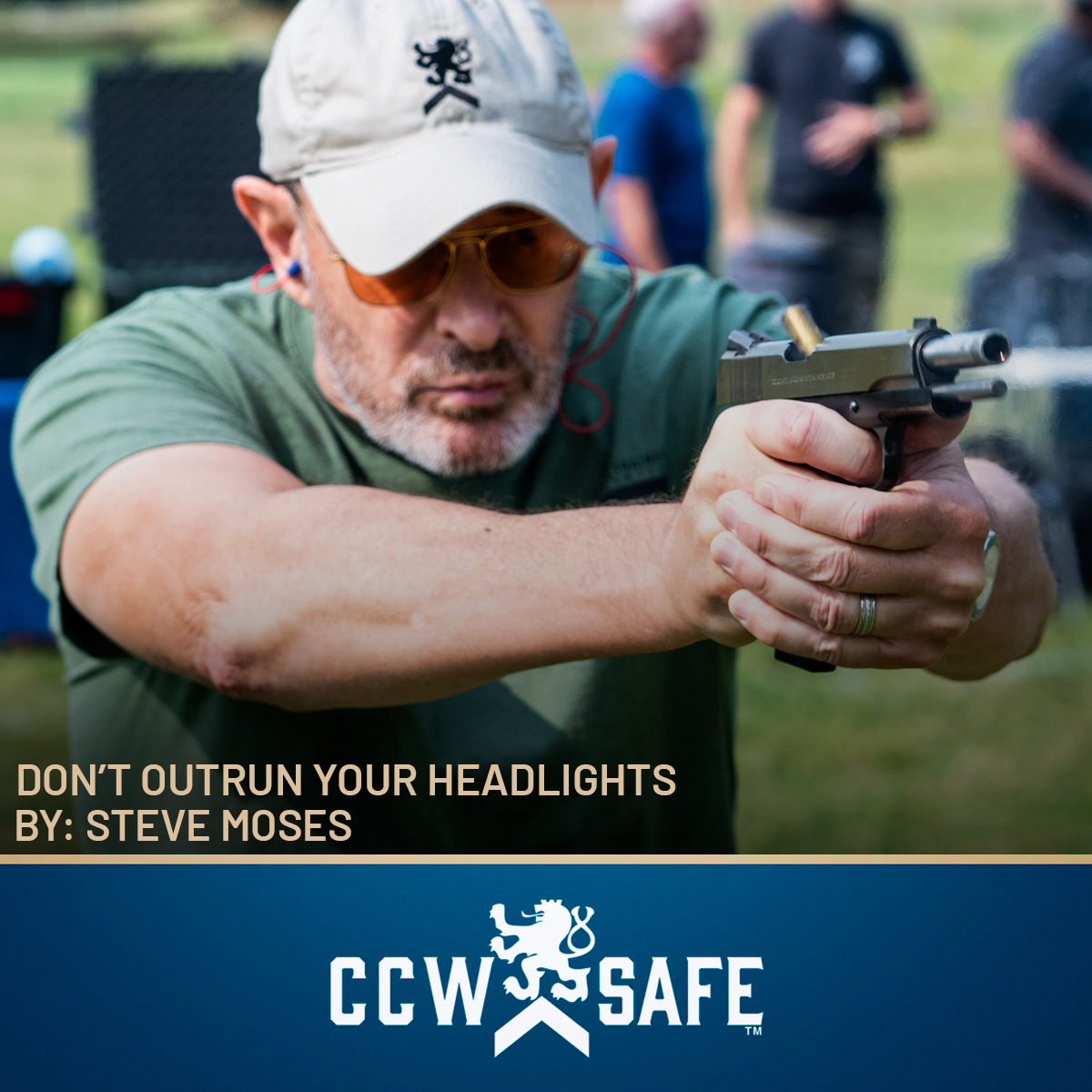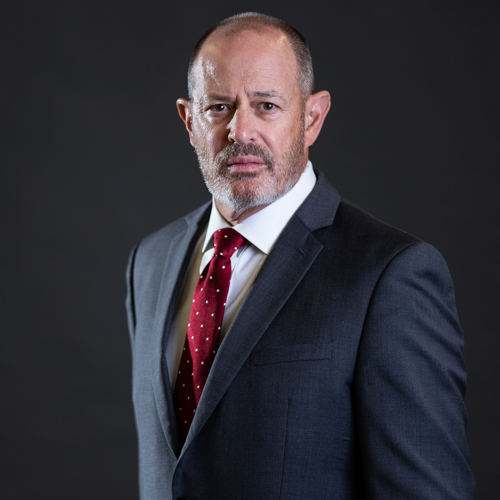
Posted on August 1, 2022
DON’T OUTRUN YOUR HEADLIGHTS
I recently saw a post on Facebook where several firearm instructors debated the value of very fast splits (the time that elapses between the firing of one shot and the subsequent firing of another shot). One party was considering adding a compensator and a weapon-mounted light to his lightweight, compact handgun in order to minimize the effect of recoil and get faster splits, and others suggested that perhaps that defeated the purpose of carrying a compact handgun in the first place and noted that even unmodified his handgun was still capable of shooting quick splits.
Master instructor Tom Givens urges his students to not teach their own students to “outrun their headlights” by shooting faster in a lethal force encounter than they can perceive and respond to a change of circumstances which may call for complete cessation of shooting or shooting at a more deliberate speed. I was aware of this concept and had experienced it during a Louis Awerbuck defensive shotgun course when he caused a 3-D target to move only a few inches a nano-second before I fully pressed the trigger on my Benelli shotgun, resulting in a complete miss at five yards.
Much emphasis is put on speed-shooting in defensive shooting classes, and most of us nod in appreciation of the skill shown when a shooter can draw from the holster and put six rounds in an eight-inch circle at seven yards in less than three seconds. One of my favorite drills is the Larry Vickers Half-Test, which we shoot from concealment. The goal is to shoot ten rounds into a five and one-half inch circle at five yards clean in five seconds or less. In order to meet this standard and shoot it clean I personally must shoot one round after the first round about every 1/3rd of a second or so. This may be faster than I can perceive and respond to a sudden change of circumstances (most especially in low light) where I am responsible for the backstop of each single round.
An automobile traveling 60 MPH may cover a distance of 88 feet in approximately one second. A 2018 Toyota Camry in good condition traveling at this speed might be expected to come to a complete stop within 120 to 130 feet from the time the brakes are fully applied. Should the driver spot an object in the road that requires an immediate application of the brakes, his or her perception and reaction time might take a full second. In that same one second, the vehicle will travel 88 feet. This would suggest that from the moment that the driver perceives an immediate need to bring the car to a full halt and stomps on the brakes that the car will travel over 200 feet or more (which is the equivalent to 2/3rds of the length of a football field). If the same driver is traveling at night on a country road at the same speed and forced to use his or her low beam due to oncoming traffic the headlights may only illuminate the road ahead to a distance of 160 feet, and perhaps even shorter if the roadway is then curved. At this speed, collision with an obstacle in the road suddenly seen by the driver is highly possible because the driver may not be able to respond quickly enough to stop the vehicle. This is most certainly true when the obstacle can move, such as a deer.
Training to shoot at high speed teaches us to get the pistol out of the holster and on target ready to shoot as quickly as possible, and it teaches us to spend a minimal amount of time from shooting one shot to being ready to shoot a subsequent shot. It does not necessarily mean that shooting as fast as possible is always going to be the best response in the event of a real-world lethal force encounter. The speed at which a person can suddenly surrender, turn their back, or even hit the ground upon being shot, especially if a round impacts the central nervous system, is surprisingly fast. I think that not “outrunning our headlights” and being able to respond appropriately to a change in circumstances is critical. It is unlikely that both parties exchanging gunfire will stay perfectly still. A perfect example of this is when police officers shoot felons in the back during gunfights because the felon turned his back to flee before the officer could cease shooting.
The ability to read the situation and respond appropriately should dictate the speed at which counter-violence is applied. It is not uncommon for some concealed carriers who really enjoy shooting to counter with the adage of “just get bigger headlights.” Until those headlights can see into the future it is probably best to remember that we would all probably benefit by giving serious consideration to Tom’s advice.

STEVE MOSES BIO:
Steve Moses has been a defensive firearms trainer for over 26 years and is a licensed Texas Personal Protection Officer with 7 years of experience performing as shift lead on a church security detail for a D/FW area metro-church. Steve is a co-owner and Director of Training for Palisade Training Group, LLC based in Dallas, Texas. Moses is a retired deputy constable and spent over 10 years on a multi-precinct Special Response Team. He owns multiple instructor certifications, including Rangemaster Advanced Handgun Instructor and Defensive Shotgun Instructor, Red Zone Knife Defense Instructor and Adaptive Striking Foundations Instructor, Modern Samurai Project Red Dot Sight Instructor, and State of Texas Personal Protection Officer Instructor. Steve holds a BJJ Brown Belt in Relson Gracie Jiu Jitsu. He is a content contributor for CCW Safe and writes weekly articles on various subjects of interest to concealed carriers. Moses shoots competitively and holds an IDPA Expert rating. Steve is an annual presenter at the Rangemaster Tactical Conference.